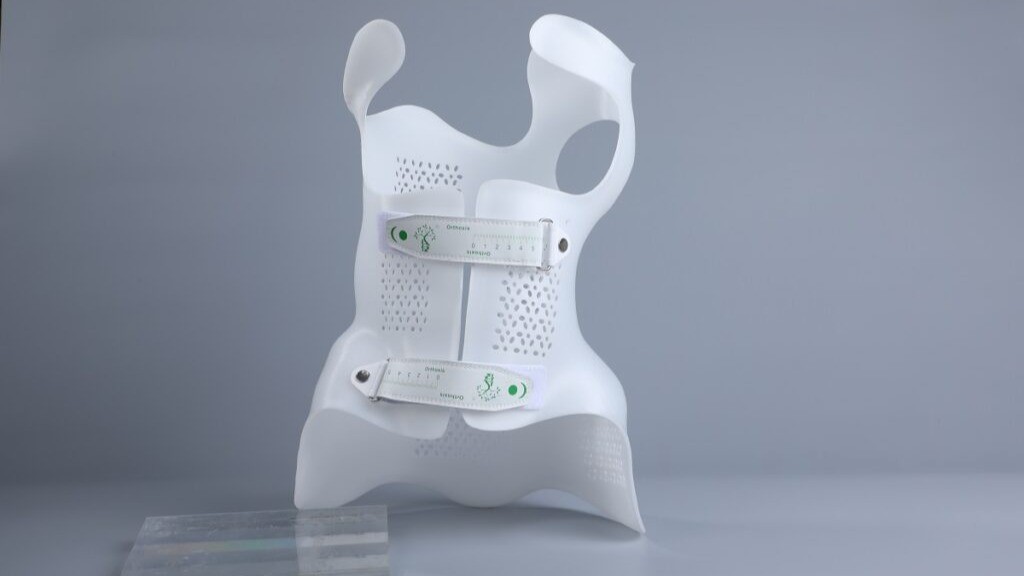
3D Printed Scoliosis Braces Transforming Modern Orthotic Care
3D Printed Scoliosis Braces Transforming Modern Orthotic Care Scoliosis is a spinal condition defined by an abnormal sideways curvature of the spine, often developing during

Schneider Electric, a global leader in energy management and automation, has been committed to optimize resources and enhance efficiency for over 100 years. At their smart factory in Plovdiv, Bulgaria, the company focuses on producing high-quality electrical components, including the essential Miniature Circuit Breaker (MCB), which ensures safe and reliable electrical systems by protecting circuits from overcurrent’s and short circuits.
To streamline production and reduce lead times, Schneider Electric integrated Additive Manufacturing (AM) and Fused Filament Fabrication (FFF) technologies into their 3D printing farm a few years ago. In October 2024, the adoption of the FUNMAT PRO 310 NEO by INTAMSYS marked a significant upgrade, enabling in-house production of key components and improving overall workflow efficiency.
By adopting 3D printing technology, the facility can now manufacture all the mechanical components required for its production line in-house. The FUNMAT PRO 310 NEO has played a crucial role in this transformation, primarily being used to print jigs and fixtures, which has significantly improved workflow efficiency. The 310 NEO is used with a wide range of materials, including PC, PA6, PA12, PPA, PA6-CF and PPS, enabling the production of durable and high-quality parts.

Prior to implementing the FUNMAT PRO 310 NEO, Schneider Electric faced inefficiencies due to conventional manufacturing methods and slower 3D printing solutions. Producing functional prototypes and custom parts took too long, often creating bottlenecks in the development process. Injection moulding further extended lead times, sometimes delaying production for up to three weeks or longer. The company needed a faster, more reliable solution to accelerate part production and improve workflow efficiency.
Schneider Electric selected the INTAMSYS FUNMAT PRO 310 NEO for its high-speed capabilities, material compatibility, and industrial grade performance. With the ability to print parts in just two hours, compared to the 12 to 15 hours for the same part, the 310 NEO drastically accelerates production cycles.
The printer’s automatic bed levelling and heated chamber (capable of reaching 100°C) simplify setup and ensure consistently high print quality. The high chamber temperature is particularly advantageous for engineering materials like PC, preventing warpage in full-size prints and providing higher Z-strength for enhanced mechanical performance.
Additionally, its open material system provides flexibility to work with various materials, though Schneider Electric primarily uses INTAMSYS filaments due to their optimized profiles and superior print consistency.

"We prefer to use the materials produced by INTAMSYS because INTAMSUTE NEO slicing software has already built-in, optimized profiles that ensures perfect prints every single time."
IDEX Technology
The 310 NEO’s IDEX (Independent Dual EXtruders) technology enables Schneider Electric to print complex parts with multiple materials in a single print job. For example, the team designed a gripper with rubber-like properties to prevent parts from falling off production lines. By combining flexible TPU95A and structural PETG, they created a durable, high-quality component that facilitates smooth production.

Additionally, Schneider Electric uses IDEX technology to produce welding jigs with complex geometries for use inside their factory machines. By combining PA6-CF with soluble support material SP3030, they were able to create these parts in under six hours—far faster than traditional methods would allow.

Since integrating the FUNMAT PRO 310 NEO, Schneider Electric has seen a remarkable improvement in production efficiency. Key benefits included:
The adoption of the INTAMSYS FUNMAT PRO 310 NEO at Schneider Electric’s smart factory in Plovdiv, Bulgaria, has significantly enhanced efficiency, flexibility, and cost savings. The integration of 3D printing technology continues to drive innovation in the production of electrical components.
With their Smart Factory certification, Schneider Electric plans to expand its 3D printing farm to further increase in-house production of components and spare parts, further reducing maintenance costs and improving self-sufficiency.
This success highlights the transformative potential of 3D printing in modern industrial environments, proving that how the INTAMSYS FUNMAT PRO 310 NEO can redefine manufacturing processes for greater efficiency and innovation.

3D Printed Scoliosis Braces Transforming Modern Orthotic Care Scoliosis is a spinal condition defined by an abnormal sideways curvature of the spine, often developing during

Touch™ Haptic Arm is a mid-range, professional haptic device used in research, 3D modelling and OEM applications Touch is a motorized device that applies force

3D Systems announce MJP 300W Plus wax 3D Printer as the new GOLD Standard for investment casting wax models. Premium quality, speed and efficiency The

INTAMSYS Launches the FUNMAT PRO 310 APOLLO: Redefining Continuous Production with High-Speed, High-Strength PEEK & PAEK 3D Printing Over the past decade, FFF 3D printing

Culinary Concepts & the story of the Brass Crab When a Crab, a 3D Scanner and a 3D Printer come together to create a replica